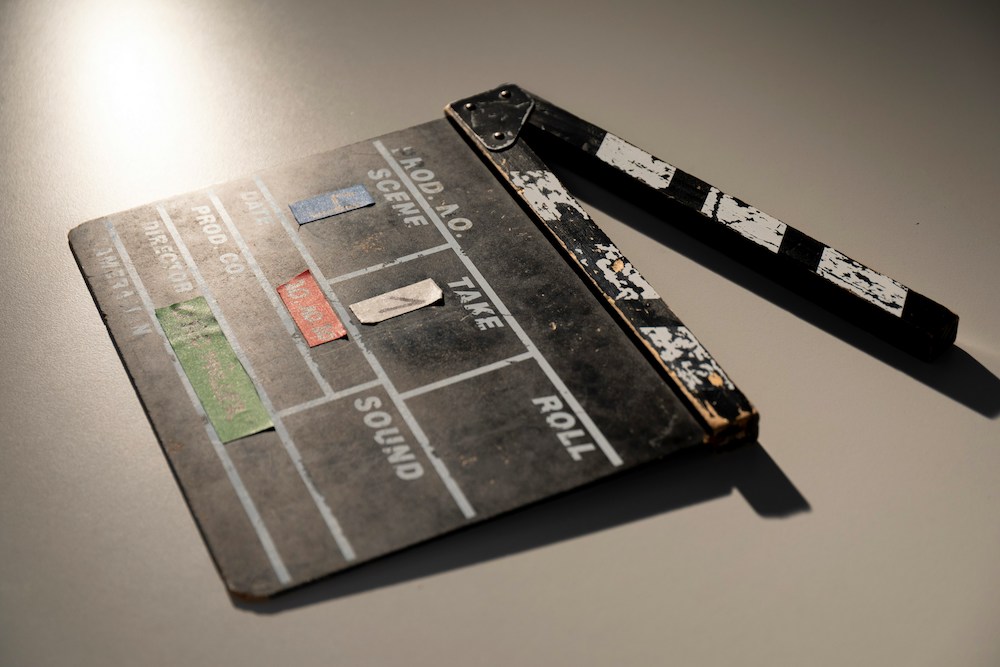Finding optimal ways to streamline voiceover recording sessions is a task every producer seeks to master.
Efficient workflow techniques not only save you time and money in the studio, they also enhance the overall quality of the finished product.
If you are a producer considering hiring a recording studio for your next voiceover, this guide will explore key techniques that can transform your recording sessions from average to efficient, promising a smooth and cost-effective process.
1. Set the mood for voiceovers with a music bed
Using placeholder music beds in your voiceover recording sessions can be an influential tool in creating the right ambience or mood for the voice actors. This tactic typically leads to emotive performances that synchronise harmoniously with the underlying tracks.

Setting the tone for voiceover recording
Music is a universal language, often carrying emotions and narratives that words can’t express. Using placeholder music beds in voiceover recording is a means to tap into this universal avenue of communication. These music beds serve as an initial draft of the soundtrack or the background music for the expected voiceover.
How placeholder music influences voiceover production
Placeholder music can dramatically impact the gestural quality, tonality, and rhythm of the voice artist’s performance. For instance, an upbeat track might inspire a lively, energetic read, while a mellow score could lead to a more subdued delivery. By aligning the voiceover tone with the mood of the music, you ensure a cohesive voiceover production.
Selecting the right music bed
Choosing the right music bed is vital to achieving the desired mood for the voiceover. Consider the narrative’s essence, the intended audience emotion, the theme, and the atmosphere you want to create.
Here are a few tips for selection:
- Match the music tempo with the scripted dialogue’s pacing.
- Pay attention to the music’s tonality – major keys are generally positive and upbeat, while minor keys can be more serious or melancholic.
- Consider the instrumentation – acoustic elements can suggest a more realistic or nostalgic feel, while electronic elements often feel modern and forward-looking.
A producer’s role in enhancing voiceover recording sessions
As a producer, your role is crucial in setting up the ideal environment for voiceover recording sessions. By carefully curating placeholder music beds, you can guide the project’s emotional trajectory and the voiceover artist’s performance.
2. Stay on track: The productive impact of recording take numbers
Recording take numbers is a simple, yet incredibly effective way of keeping track of your voiceover recording sessions. This process can streamline your workflow by enabling you to mark and revisit your best takes efficiently, saving you precious time and creative energy.

The importance of take numbers in voiceover recording
Every professional voiceover recording session often involves numerous takes. Remembering or deciphering each one becomes a daunting task if you don’t have a systematic approach. That’s where take numbers comes in. This practice allows everyone involved in the process, from producers to editors, to stay organised and improve efficiency.
How take numbers simplify voiceover production
By assigning a unique number to each take, you create a reference point, making it easier to identify and revisit preferred takes during post-production.
Take numbers to improve the comping process
Take numbers ease the comping process significantly, removing the need to sift through large playlists of audio. Instead, you already have a shortlist on hand to refer back to, saving you huge amounts of time and energy.
Implementing take numbers in your recording sessions
Establishing a method for take numbers can look different depending on your unique process and needs. However, here are a few starter tips:
- Always record the take number audibly and note it in your session log.
- Make it a habit to call out the take number before or after every take. This will make it easier to match the audio with its corresponding number in the post-production phase.
- Experiment with colour coding or different marking systems to denote takes that stood out to you.
By strategically incorporating this workflow tool into your voiceover recording sessions, you can enhance overall productivity and ensure a smoother production process.
3. Perfect sync every time: Consolidated audio exports
Getting everything perfectly in sync is a top priority in voiceover production, which is why we consolidate our audio exports.

Understanding consolidated audio exports in voiceover recording
Voiceover recording sessions often churn out a multitude of separate audio files/takes. Consolidated audio exports essentially compile these into a single, uninterrupted piece of audio that stretches from the start to the end of the session, ensuring every take maintains its original position relative to the timeline.
Consolidated audio exports offer a host of benefits to your voiceover production process. Here are a few notable ones:
- It simplifies the editing process. With consolidated audio exports, the editor can instantly drop the files into their editing software, and everything will automatically line up, ready for playback and comping.
- It minimises the risk of misalignment. Since audio sections retain their original timestamps, their synchronisation with the video doesn’t get disrupted.
- It saves time. The process of locating and manually aligning individual takes to the video is no longer required.
4. Transforming the post-session editing process: A guide to notes and file names

The success of a voiceover production extends beyond the walls of the studio. Proper documentation using notes and strategic file naming can significantly improve the efficiency your project.
How post-session notes enhance voiceover recording sessions
A well-documented post-session note presents a concise overview of the recording process. It could include in-session script changes, preferred takes, or possible alternative lines. By creating a system with colour-coded scripts, you can easily identify which takes correspond to each line in the master comp.
The value of organised file names in voiceover production
Meticulously organised and named files can significantly streamline your voiceover production process. Key details such as the date, take number and brief descriptions included in the file name will help you locate the desired audio clip.
Implementing post-session notes and file naming in your recording sessions
With the effective implementation of these strategies, you can drastically improve the efficiency of your voiceover sessions, saving you time and money. Here are some takeaway tips:
- Use clear and descriptive file names that follow a consistent naming protocol, making it easier to find specific recordings.
- Make detailed notes during the recording session, including line changes, take preferences and anything else that may help during post-production.
- Consider using a colour-coding system or other visual markers in your notes for easy referencing.
Mastering Workflow in Voiceover Production: A Summary
When it comes to voiceover recording sessions, the key to achieving optimal results lies in mastering an efficient workflow. Combining powerful techniques such as placeholder music beds, recording take numbers, consolidated audio exports and systematic post-session notes can truly revolutionise your production process.
Taking Your Voiceover Sessions to the Next Level
To summarise, quality voiceover production involves more than just recording – it’s about creating an environment that nurtures creativity, promotes efficiency, and delivers results.
Utilise these tips in your next voiceover recording session to ensure top-tier audio content.




